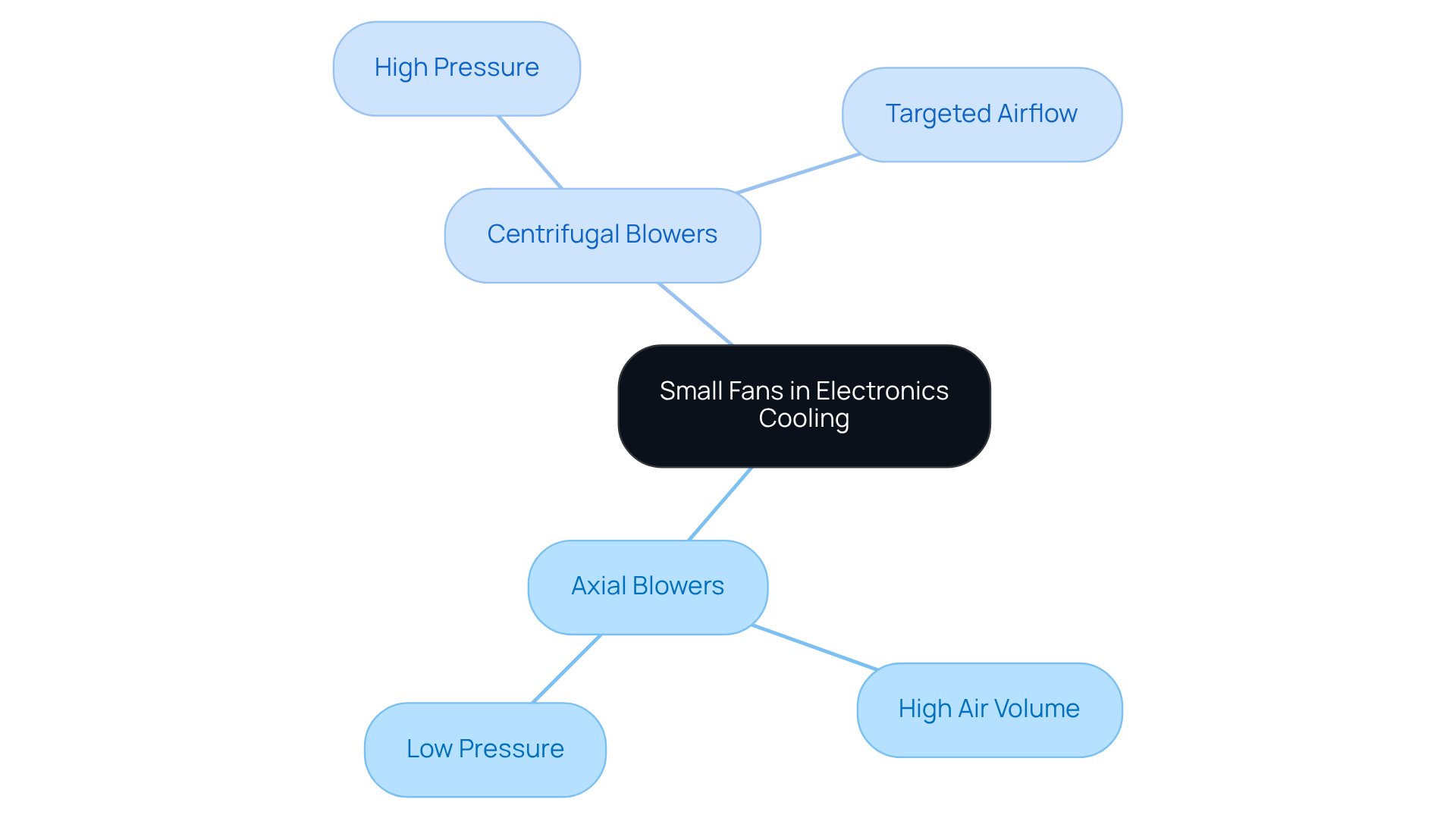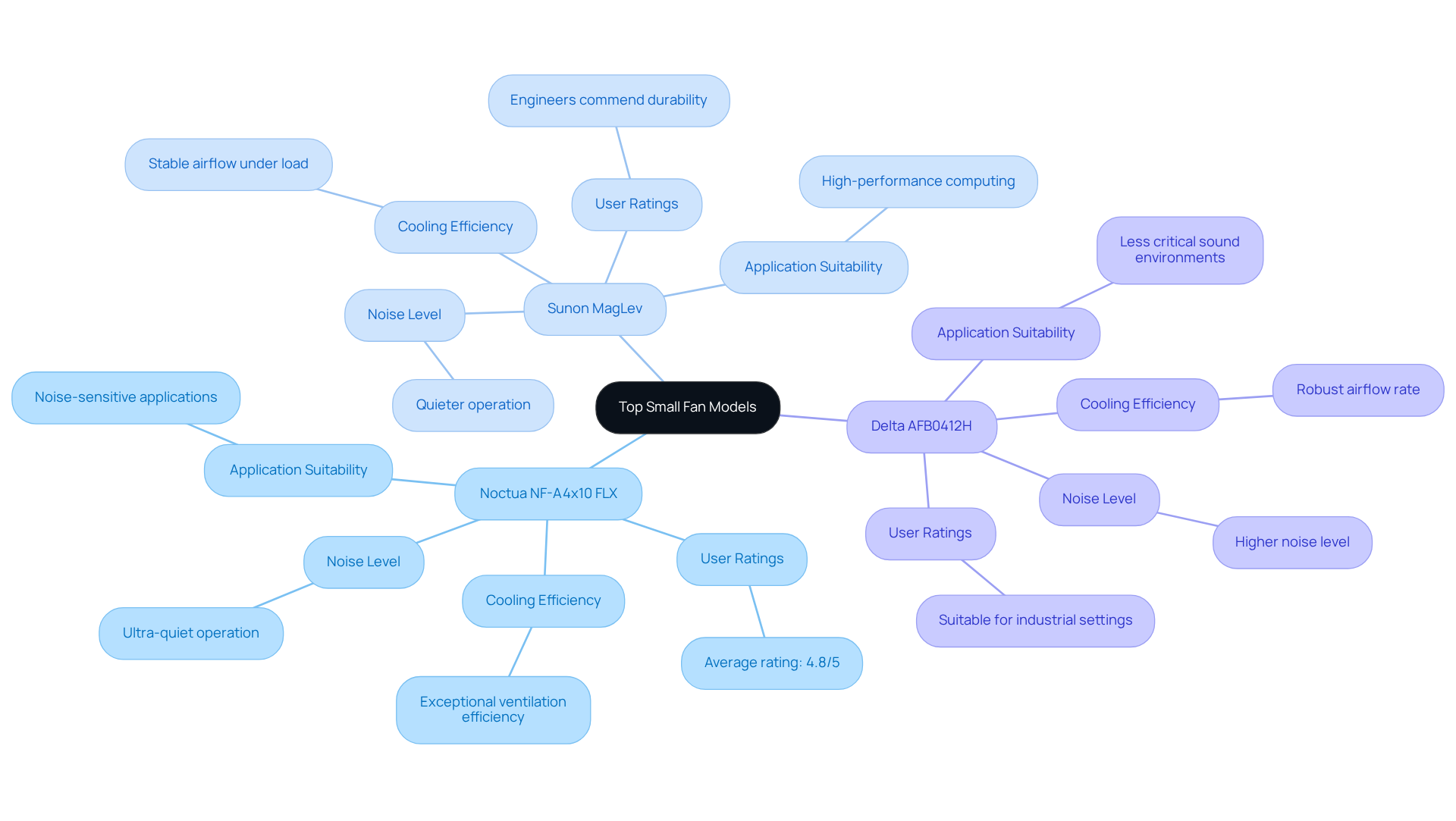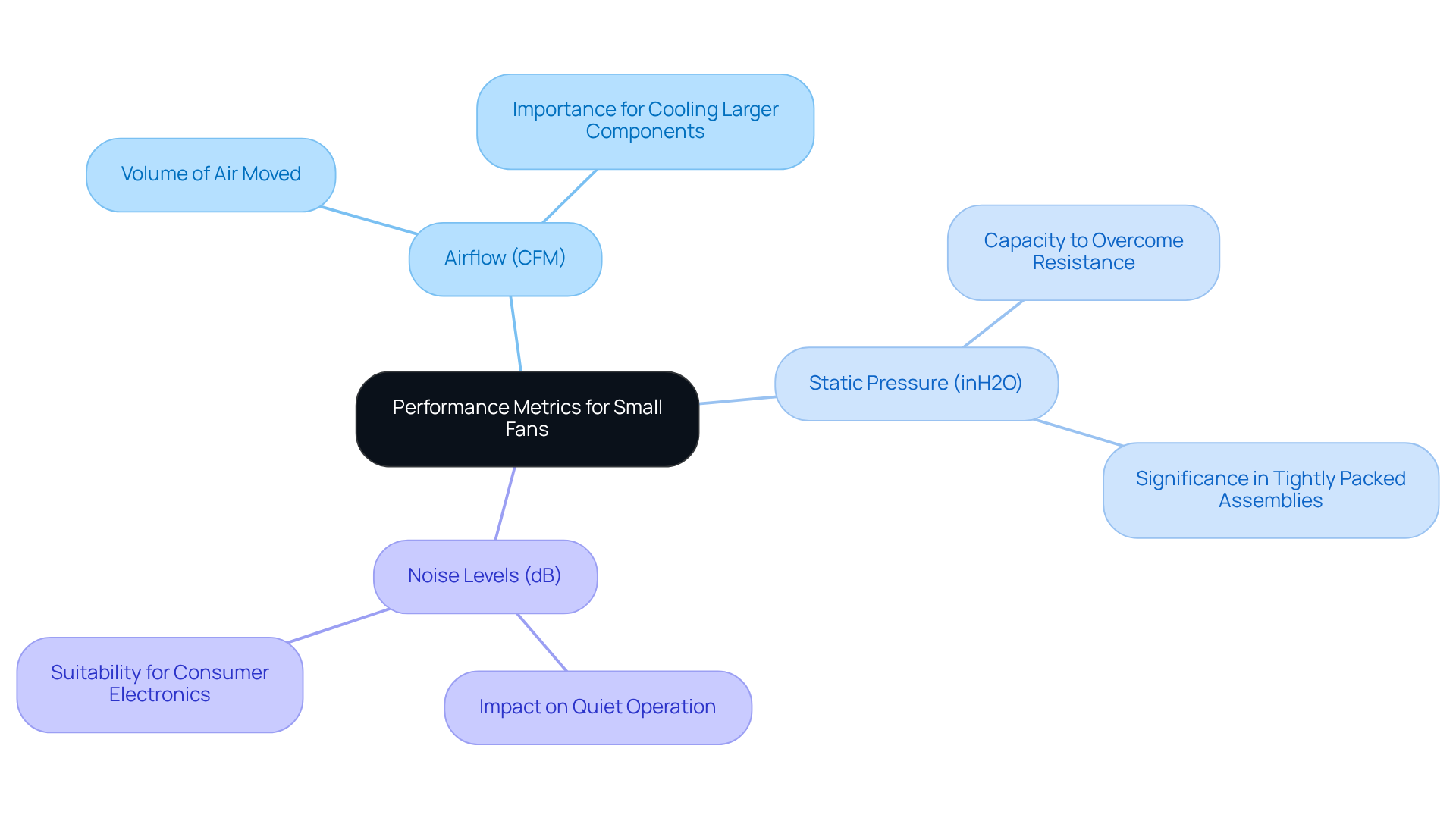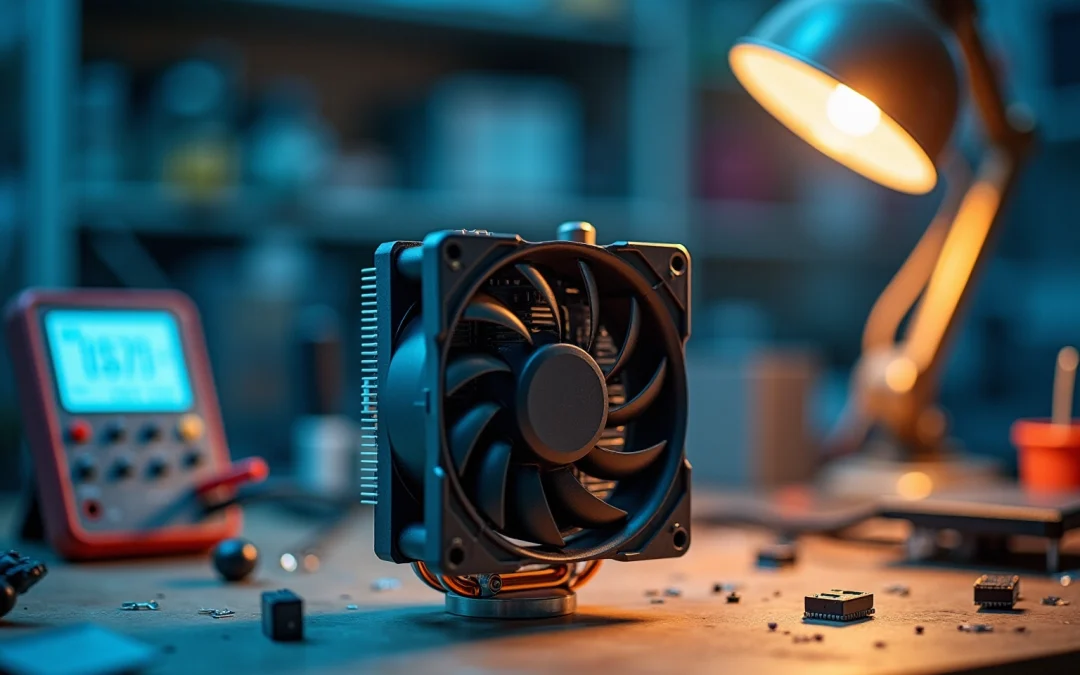Overview
This article presents a comprehensive comparative analysis of small fans utilized for electronics cooling, emphasizing the critical distinctions between axial and centrifugal blowers while evaluating specific fan models. It systematically details the performance characteristics—such as airflow, static pressure, and noise levels—of leading models, including the Noctua NF-A4x10 FLX and the Sunon MagLev fan. This thorough examination equips engineers with the necessary insights to make informed decisions tailored to their specific cooling requirements.
Introduction
Compact fans are crucial for the performance and longevity of electronic devices, particularly in settings where efficient heat dissipation is vital. This article presents a comparative analysis of various small fan models, offering insights into their distinctive features and applicability across different cooling scenarios.
As engineers and designers confront the challenge of selecting the appropriate fan, a pressing question emerges: how can they effectively balance performance, noise levels, and energy efficiency to satisfy the specific requirements of their systems?
Understanding Small Fans in Electronics Cooling
Compact blowers, like a small fan for electronics, are essential in the cooling of electronic devices, especially in confined spaces where effective heat dissipation is crucial. These devices function as a small fan for electronics, engineered to circulate air efficiently and lower the temperature of sensitive components. Typically, small blowers can be classified into two main types: axial and centrifugal.
- Axial blowers excel at transporting large volumes of air at low pressure, making them ideal for general temperature regulation.
- Conversely, centrifugal blowers generate higher pressure, making them more suitable for applications requiring targeted airflow, such as cooling specific components within a device.
Recognizing these distinctions is imperative for engineers and designers when selecting the appropriate small fan for electronics to meet their cooling requirements, ensuring optimal performance and extending the lifespan of electronic systems.

Comparative Analysis of Top Small Fan Models
In the competitive landscape of small fans, several models stand out due to their performance and reliability. The Noctua NF-A4x10 FLX is particularly recognized for its ultra-quiet operation and exceptional ventilation efficiency, rendering it an excellent choice for noise-sensitive applications. Customer reviews consistently commend its performance, with an impressive average rating of 4.8 out of 5 stars. Users highlight its quiet operation even under load, a critical factor in environments where sound levels must be minimized. Furthermore, its durability and effectiveness across various setups bolster its esteemed reputation in the market.
On the other hand, the Sunon MagLev fan incorporates cutting-edge magnetic levitation technology, which significantly reduces friction and enhances longevity. This innovation makes it especially well-suited for high-performance computing environments, where durability and consistent airflow are paramount. Engineers have observed that the MagLev technology not only prolongs the fan’s lifespan but also ensures stable performance over time, even under demanding conditions. One engineer remarked, “The Sunon MagLev fan’s design enables quieter operation while maintaining steady air movement, which is essential for our high-performance applications.”
Another notable contender, the Delta AFB0412H, offers a robust airflow rate, albeit at a higher noise level. This model is more appropriate for situations where sound is less critical, such as in industrial settings or machinery not located near users.
By evaluating these models, engineers can make informed decisions that align with their specific temperature management requirements, effectively balancing performance, operational noise, and energy efficiency. Ultimately, the choice between the Noctua NF-A4x10 FLX and the Sunon MagLev fan, both designed as a small fan for electronics, hinges on the unique demands of the application, ensuring optimal thermal management in electronic systems.

Evaluating Performance Metrics and Suitability for Applications
When assessing performance metrics for small fans for electronics temperature management, several factors are critical.
- Airflow, measured in cubic feet per minute (CFM), indicates the volume of air a fan can move; higher CFM ratings are generally preferred for cooling larger components.
- Static pressure, measured in inches of water gauge (inH2O), signifies a fan’s capacity to overcome resistance in flow paths, which is especially significant in tightly packed electronic assemblies.
- Noise levels, measured in decibels (dB), are also a significant consideration, particularly in environments where quiet operation is essential.
For instance, a fan with a high CFM but excessive noise may not be suitable for consumer electronics, while a quieter fan with lower airflow may suffice for less demanding applications. Understanding these metrics enables engineers to select fans that not only meet cooling requirements but also align with the operational context of their electronic devices.

Conclusion
In the realm of electronics cooling, small fans play a pivotal role in managing temperature and ensuring the longevity of devices. This comparative analysis highlights the critical distinctions between axial and centrifugal blowers, emphasizing their unique advantages based on airflow requirements and pressure needs. Understanding these differences is essential for engineers and designers when selecting the right fan to optimize performance and enhance the durability of electronic systems.
The article delves into specific fan models, showcasing the strengths of the Noctua NF-A4x10 FLX for its quiet operation, the innovative Sunon MagLev fan for its durability and performance, and the robust Delta AFB0412H for high airflow in less noise-sensitive environments. Each model presents distinct features that cater to varying cooling demands, underscoring the necessity of aligning fan selection with specific application requirements. Furthermore, the evaluation of performance metrics such as airflow, static pressure, and noise levels provides a comprehensive framework for making informed decisions.
Ultimately, the significance of selecting the appropriate small fan for electronics cooling cannot be overstated. As technology continues to advance, the need for efficient thermal management will only grow. By understanding the comparative advantages of different fan types and models, engineers can ensure optimal cooling solutions that enhance device performance and reliability. Embracing this knowledge will lead to smarter design choices, fostering innovation in the field of electronics cooling for years to come.
Frequently Asked Questions
What is the purpose of small fans in electronics cooling?
Small fans, such as compact blowers, are essential for cooling electronic devices by efficiently circulating air and lowering the temperature of sensitive components, particularly in confined spaces.
What are the two main types of small blowers?
The two main types of small blowers are axial blowers and centrifugal blowers.
What are the characteristics of axial blowers?
Axial blowers excel at transporting large volumes of air at low pressure, making them ideal for general temperature regulation.
When are centrifugal blowers preferred?
Centrifugal blowers are preferred for applications requiring higher pressure and targeted airflow, such as cooling specific components within a device.
Why is it important for engineers and designers to understand the differences between blower types?
Understanding the distinctions between blower types is crucial for engineers and designers to select the appropriate small fan for electronics, ensuring optimal performance and extending the lifespan of electronic systems.

